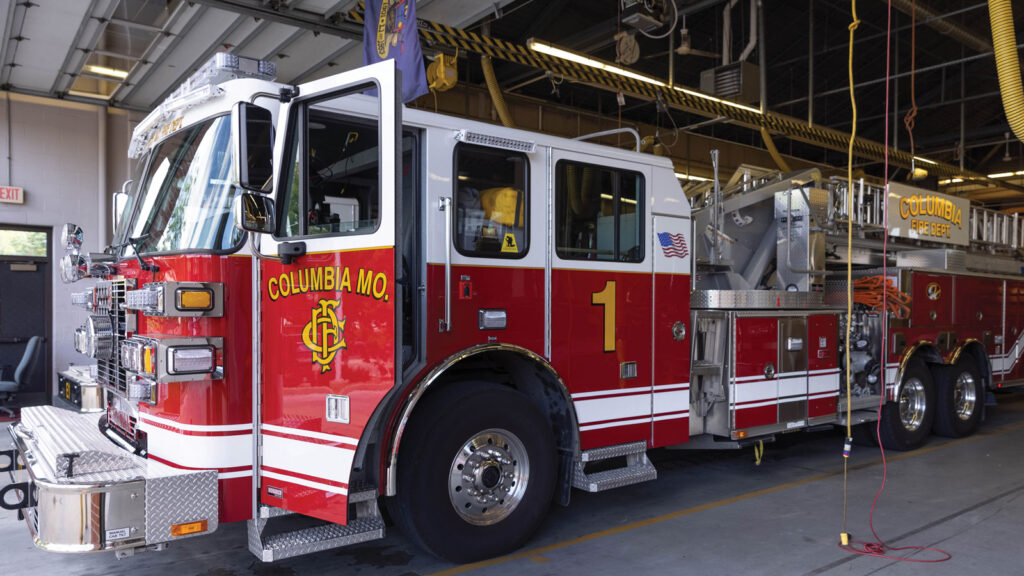Columbia Fire Department maintains lofty international accreditation.
Thousands, if not millions, of data points. Hundreds, if not thousands, of pages of documents, reports, and analysis. More than 100,000 staff hours and nearly 70,000 calls for service.
How is any of that related to firefighting? According to the Commission on Fire Accreditation International (CFAI), it proves that the Columbia Fire Department is worthy of receiving reaccreditation, five years after the department gained elite status among a group of only 312 fire departments worldwide to earn that recognition.
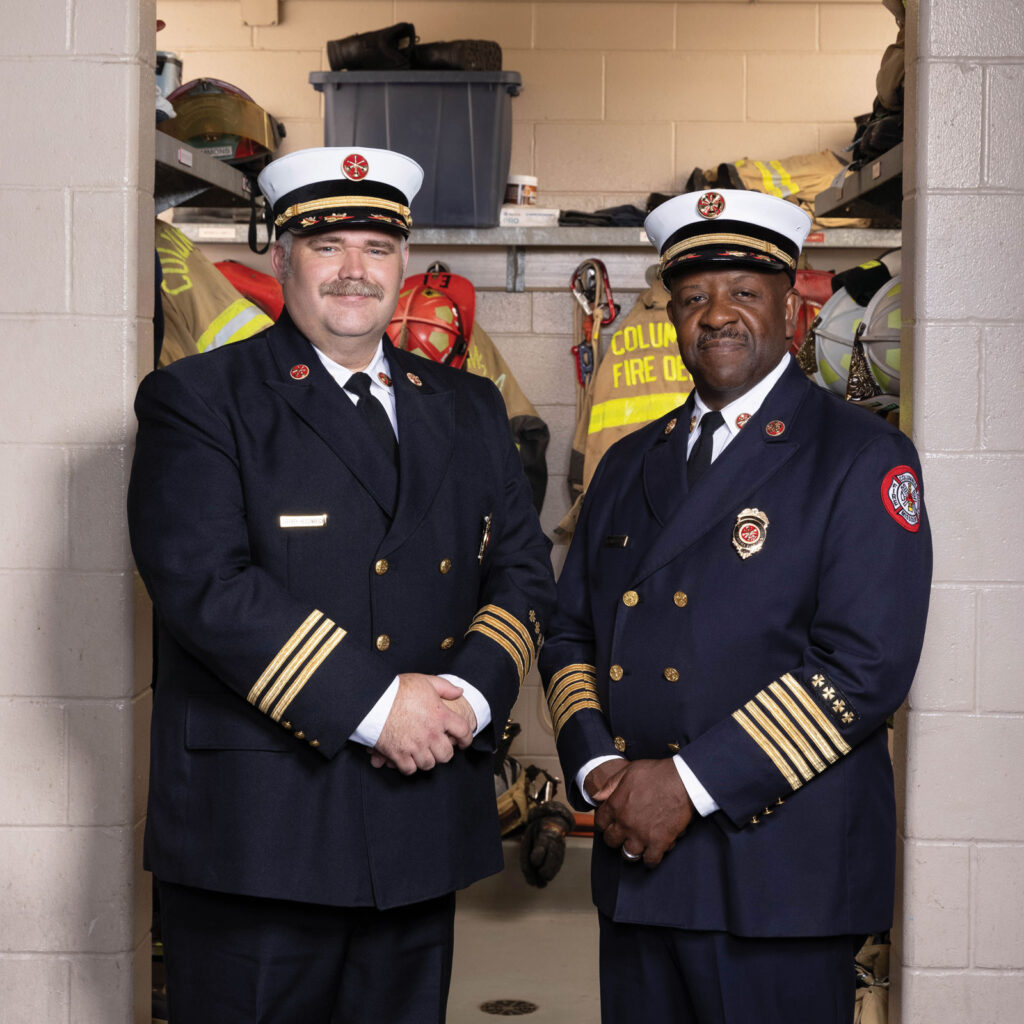
“It’s a huge accomplishment,” notes retired and former Columbia Fire Chief Clayton Farr Jr. “It’s a great amount of work. And it never stops. It’s not a one-and-done” achievement.
Assistant Chief Jeffrey Heidenreich was the Columbia Fire Department’s accreditation manager throughout the process and was the point-person for assembling and having working knowledge of the data, reports, and analysis that went into the process of demonstrating the department’s success and shortcomings. He echoed Farr’s observations.
“It’s not a rubber stamp” for excellence, Heidenreich said. “It’s a process, not a project.”
For example: The 2023 Community Risk Assessment that examined how well the CFD was covering all incidents and calls for service showed a five-year total — from 2018 to 2022 — of 68,127 incidents, which account for fire calls, emergency medical services (EMS), and other incidents. Each of those incidents are further broken down into the type of apparatus used (95,785 apparatus in total), whether a fire was a building, wildland, or vehicle fire, and the types of EMS responses.
The breakdown, which is summarized in a more than 220-page document, also shows staff hours and dollar loss from all incidents. But the data and analysis does not stop there. Each of the department’s 10 fire stations account for staff time, response times, and whether the station or crew was a first, second, third, or later response to a call. The response times are also broken down, and the apparatus from each station has a breakdown of use, timeliness of response, and other data points that the department uses to determine its effectiveness and whether an additional fire station is needed.
Nearly half of Columbia’s municipal budget pays for public safety — law enforcement, fire, and municipal court. The fire department’s budget expenses for fiscal year 2024 totaled $28.85 million.

While the granular nature of the accreditation and reaccreditation process might be eye-glazing or mind-numbing to the public, the numbers and conclusions are invaluable to show strengths and shortfalls, giving the department solid insight into how to make improvements. And that is the point, Heidenreich explained.
“The ultimate goal has to be service to our customer, and that’s the community,” he said. “How well do we respond when someone calls 9-1-1?”
The five-year overview showing 68,127 incidents included 1,984 fire incidents, 42,571 EMS incidents, and 23,572 “other” incidents. The fire breakdown listed 569 building fires, 497 wildland fires, and 308 vehicle fires. Of the EMS incidents, 1,880 were for vehicle responses and 253 were for technical rescues. The dollar loss list for all incidents was a combined $11,947,749. A corresponding chart shows the locations of all calls. The calls that had a crew on the scene within four minutes are marked as green dots. The calls that took longer than four minutes for a response are marked in red.
How quickly the fire department responded and how well the incidents were managed are also detailed throughout the report, which earned high marks from the CFAI accreditation agency. The comprehensive assessment covered all aspects of the department’s operations including emergency response, training, equipment maintenance, community outreach, governance, administration, and leadership practice.
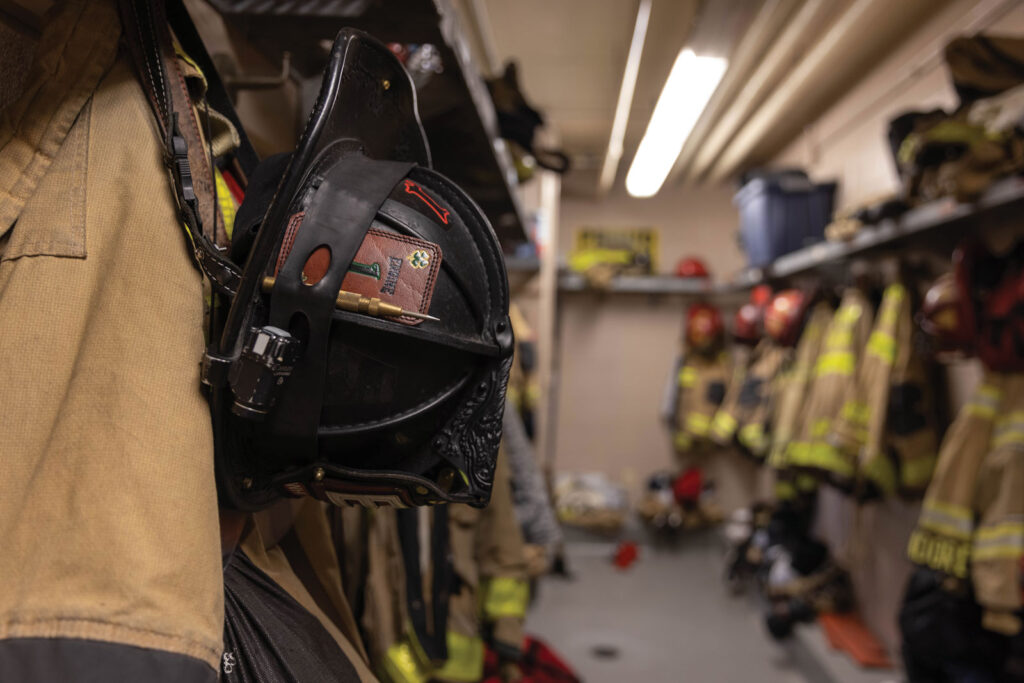
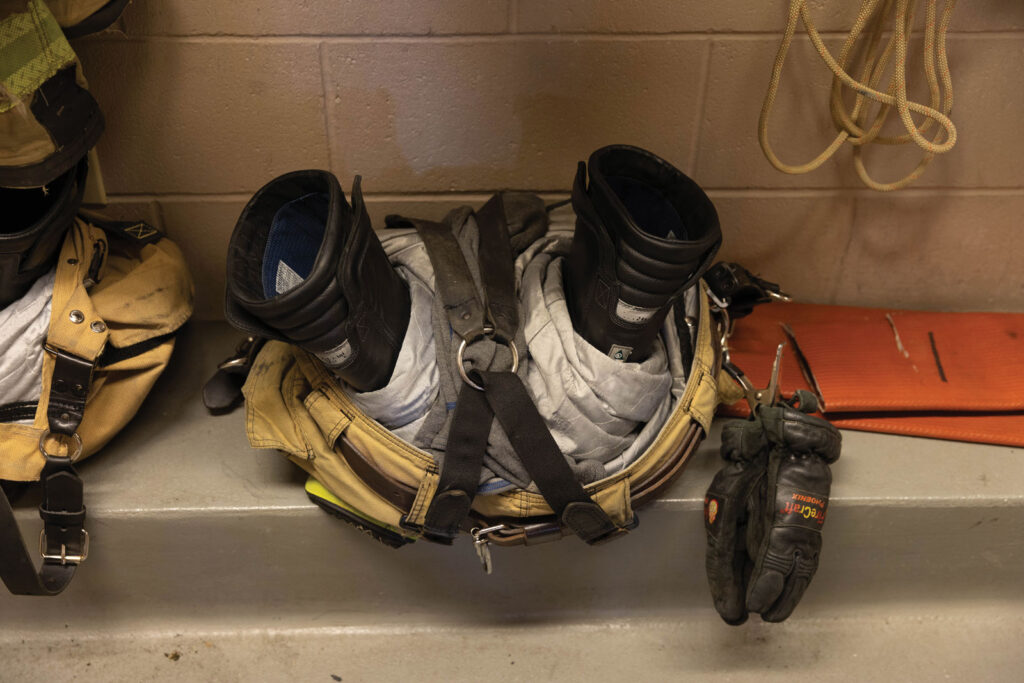
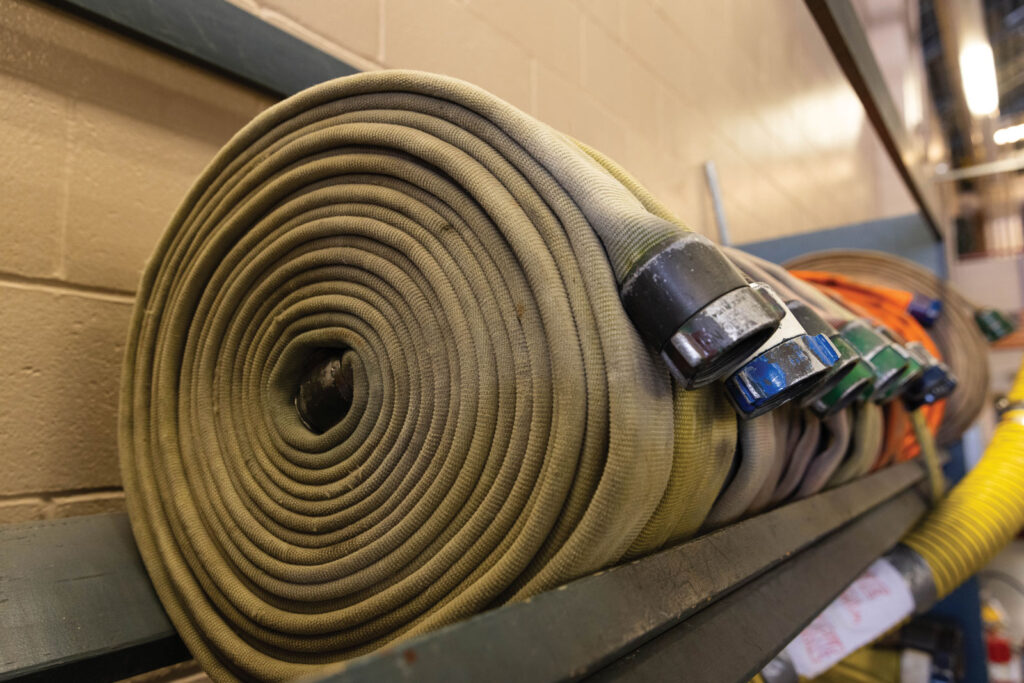
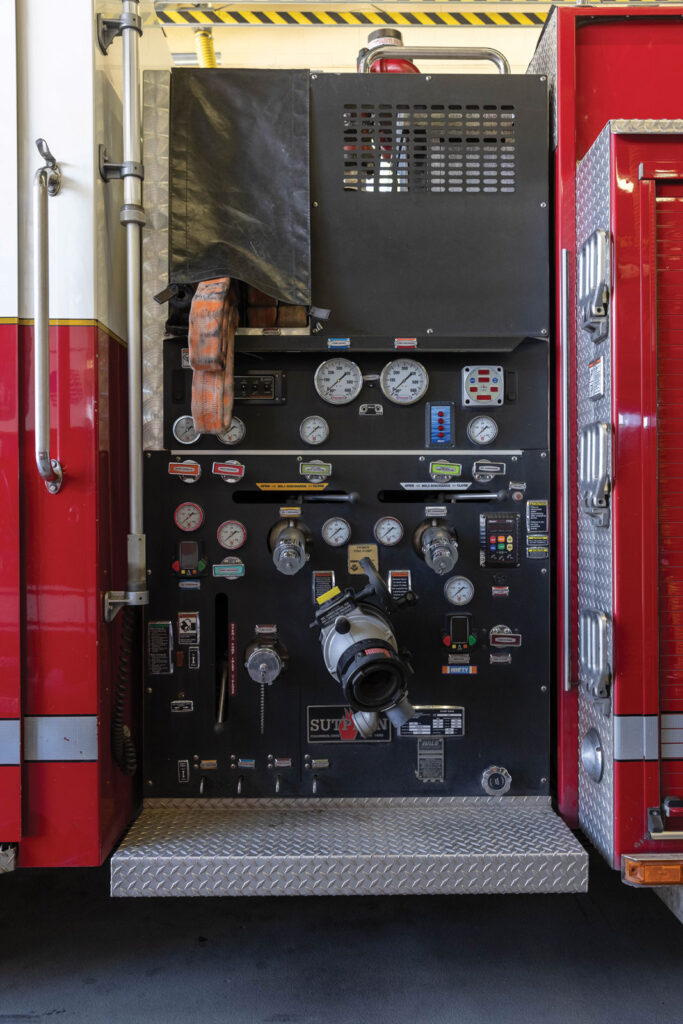
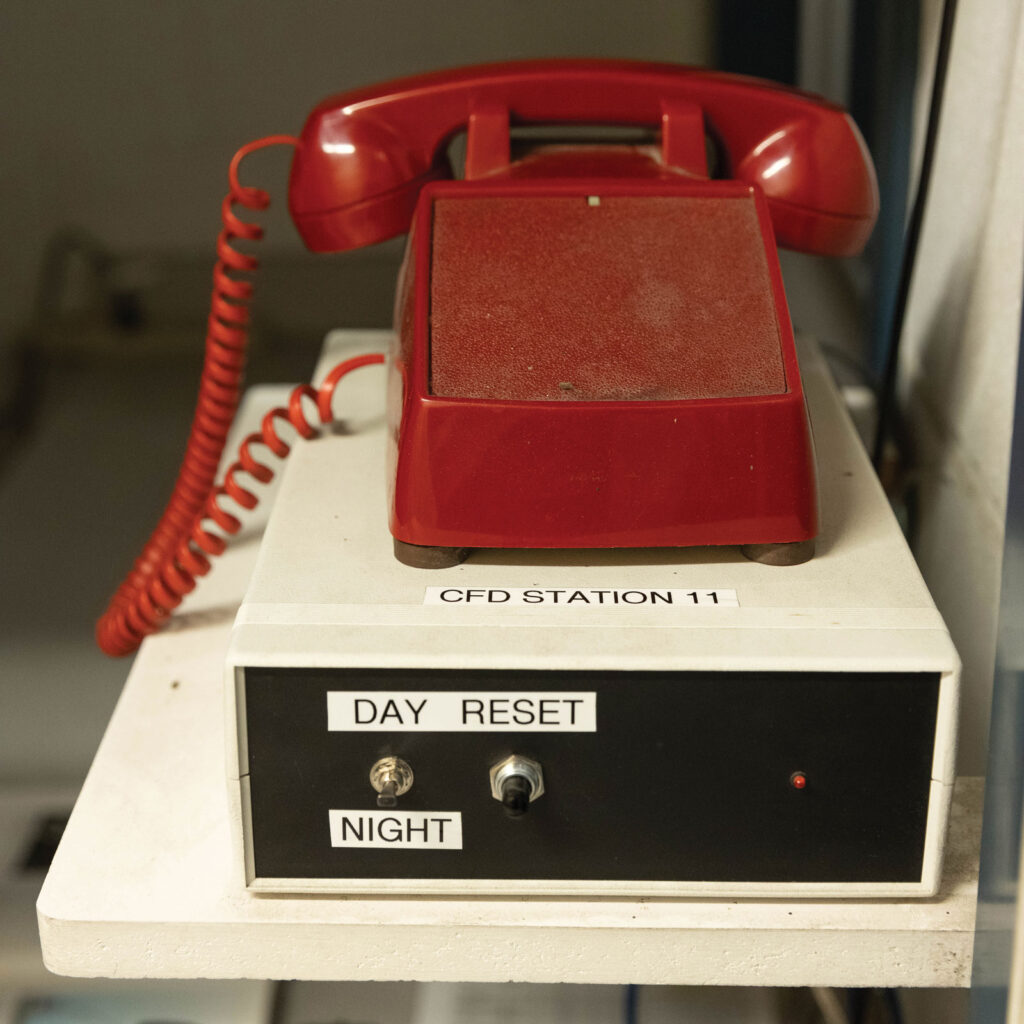
Heidenreich pointed out how the data and analysis demonstrated and verified the need to build Station 11 in south Columbia. Prior to that station opening last fall, it took the department eight-and-a-half minutes to respond to a house fire in the Thornbrook subdivision. (Fire science shows that a fire of that nature will double in size every thirty seconds.) Engine 11 can now reach that area in three minutes or less.
The department’s target is arriving on a scene with a fully prepared crew within four minutes after the call 90 percent of the time. Due to that target and the reaccreditation, areas served by the Columbia Fire Department have an Insurance Services Office (ISO) rating of 2, just a step from the top rating. Insurance carriers use the ISO rating to determine insurance rate and premiums.
City Manager De’Carlon Seewood was among a group of fire department and city officials that met with a review panel, a process he described as “kind of intimidating” to dispel any notion that accreditation is easy or painless.
“The process is as much about improving as it is meeting standards and goals,” he said, explaining that the reaccreditation effort as “a herculean task, a lot of work” that shows CFD’s commitment to public safety and Columbia residents.
“Not every city, not every organization has the capacity to take this on,” Seewood added.
CFAI presented a list of 15 recommendations involving leadership development, further risk assessments to determine necessary prevention programs, developing department policies to formalize agreements and procedures, staffing levels, and, other things, work toward having city officials adopt the most current International Fire Code.
During the reaccreditation process, a peer review team came to Columbia and shadowed department staff and leaders, monitoring and evaluating day-to-day calls and administrative tasks.
“We’d tell them, ‘We’ve got a great relationship with our 911 center, or our IT department,’ and the review team would say, ‘That’s great. Now let’s go talk to them,’” Farr said. “They verified everything that we provided to their team.”
The accreditation report’s executive summary praised CFD for its achievement.
“There is clearly a commitment to continue to follow and support the implementation of identified opportunities for improvement,” according to the report. “It is anticipated the agency will move swiftly on many of the recommendations. The agency’s leadership was incredibly open to the peer team …”
A city news release also lauded the intent of the process.
“Receiving reaccreditation from the CFAI reaffirmed the department’s position as a leader in the fire service and demonstrated its commitment to meeting and exceeding the community’s needs,” the release said. “The process not only validated the department’s existing practices but also provided a roadmap for continuous improvement and innovation in the future.”
Farr said the department’s most valuable resource, “our members,” deserve credit for successful reaccreditation.
“We had participation from every division within the department and from each rank of personnel,” he added. “Our staff provide amazing service to our community day in and day out.”
One ongoing focus will be introducing the ins and outs of accreditation to new trainees, and to understand what the recognition is — and what it is not.
“It’s not a sticker on a firetruck or a patch on the shoulder,” Farr said. “I think some people have the belief that accreditation is the end all, be all. That it’s once and done. But we want all of our members to understand it’s not a stale document. It’s a living, breathing way of thinking.”
As the department’s accreditation manager, Heidenreich is also a CFAI peer assessor.
“I think you have an opportunity to make an impact,” he said. Applying all he has learned and experiencing the process as a manager gave Heidenreich an even deeper understanding of accreditation and the amount of work that goes into that.

“I’ve learned to appreciate all the things we do really well,” he said. “We’re a great professional career fire department, and we’re doing what great fire departments do.”
And the mountain of documents and data that got the department to this point is not going away, he promised.
“It shows where we have gaps and what we are going to do about it,” Heidenreich explained. “It really tells the story of how reliable we are and what we are holding ourselves to.”
